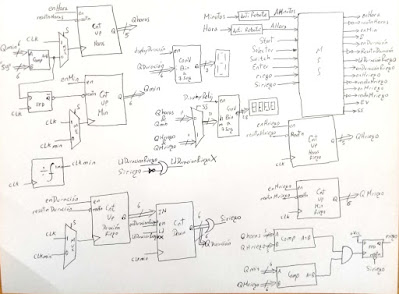▷ Practice 4 #TSCLAB: Activation of transistor 2 and reading of temperature sensor 1 and 2
⭐⭐⭐⭐⭐ Practice 4 #TSCLAB: Activation of transistor 2 and reading of temperature sensor 1 and 2
- Github Repositories
- ▷ #TSCLab #TCLab #ESP32 #Arduino #Control #MACI
- When using this resource, please cite the original publication:
Objetivo general:
- Guardar las mediciones obtenidas con ayuda de Cool Term y exportarlas en un archivo comma-separtaed-values (csv).
Objetivos específicos:
- Guardar los datos de las lecturas realizadas con el heater 2 activado.
Materiales:
- Programa Cool Term
- PCB de Temperature Control Lab (TSC-Lab)
Introducción:
Para esta práctica, el sistema sigue sin tener retroalimentación, es decir, es en lazo abierto ya que simplemente se está midiendo el cambio de temperatura conforme los heaters estén activados o desactivados y esto dependerá con cual de los casos el estudiante desea trabajar.- Caso 1: ningun heater está activado
- Caso 2: únicamente el heater 1 se activa y desactiva.
- Caso 3: únicamente el heater 2 se activa y desactiva.
Para esta práctica se trabajará con el caso 3. Los mediciones son almacenadas en el ordenador gracias a Cool Term.
- Caso 1: ningun heater está activado
- Caso 2: únicamente el heater 1 se activa y desactiva.
- Caso 3: únicamente el heater 2 se activa y desactiva.
Para esta práctica se trabajará con el caso 3. Los mediciones son almacenadas en el ordenador gracias a Cool Term.
Procedimiento:
Se asume que las librerías del sensor de temperatura y ESP están instaldas en el IDE de Arduino.- Copiar el código en el IDE de Arduino:
- Copiar el código en el IDE de Arduino:
Repositories: https://github.com/vasanza/TSC-Lab/tree/main/Practice4
- Cargar el código a la placa.
- Abrir Cool Term, iniciar la conexión y guardar los datos.
Nota: los comandos de activación y desactivación de los heaters dependerá de cada caso pero deben ser enviados por el "Monitor Serie" de Cool Term y son los siquientes:
- Para iniciar el caso 1 se debe enviar el comando: case_1
- Para iniciar el caso 2 se debe enviar el comando: case_2
- Para iniciar el caso 3 se debe enviar el comando: case_3
En esta práctica se ingresará el comando case_3.
Si al momento que se exportaron los resultados a .txt contiene cadenas de texto como por ejemplo "Choose any case" o cualquier otro, se recomienda borrarlos antes de exportarlos a .csv.
Resultados:
Los archivos .csv generados de esta práctica se los puede apreciar aquí.
Los archivos .csv generados de esta práctica se los puede apreciar aquí.
Read related topics
- ➡️ TSC-LAB Data sheet
- ➡️ TSC-LAB Certification
- ✅ Initial setups and tests
- ✅ Ambient temperature reading using sensor 1 and 2
- ✅ Activation of Transistor 1 and Reading of temperature sensor 1 and 2
- ✅ Activation of Transistor 2 and Reading of temperature sensor 1 and 2
- ✅ Activation of Transistor 1 and 2, also Reading of temperature sensor 1 and 2
- ✅ Initial setups and tests (ON/OFF)
- ✅ Speed control using PWM
- ✅ Motor direction control and Speed control
- ✅ Encoder Implementation (RPM)
- ✅ Data acquisition with square velocity input
- ✅ Wifi connection
- ✅ ThingSpeak (Http)
- ✅ NodeRed (USB)
- ✅ NodeRed (Wifi)
- ✅ NodeRed (Http) + Telegram
- ✅ NodeRed (Http) + ThingSpeak
- ✅ MQTT connection (MQTTLens)
- ✅ MQTT Server (mydata-lab)
- ✅SISO using temperature sensor 1 and transistor 1 or sensor 2 and transistor 2
- ✅ Using two core of ESP-32
- ✅ Deep sleep to TSC-Lab













Comentarios
Publicar un comentario